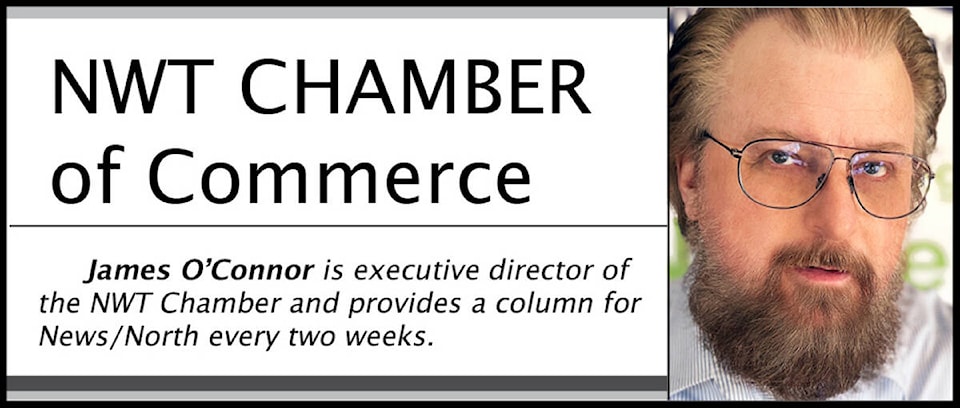The NWT Chamber of Commerce understands the need to periodically raise the monthly living allowance and other rates to reflect economic realities and to use the Canada Market Basket Measure as a guide.
There is also no debate as to the usually positive results of a post-secondary education, leading to well-paying and rewarding careers.
The NWT Chamber supports proposed Student Financial Assistance (SFA) changes that offer better support to Indigenous students with financial assistance to access post-secondary education. While there always will be some who question the policy, it is aligned with Truth and Reconciliation of Canada Calls to Action, the Report on Missing and Murdered Indigenous Women, and the United Nations Declaration on the Rights of Indigenous Peoples.
The GNWT should ensure taxpayer funds being handed out in its SFA program do more for the North. Students need to be more strongly incentivized to match their field of study with current NWT labour market demands.
Other jurisdictions, such as Quebec, encourage students to earn diplomas in programs leading to employment in fields with shortages in the workforce. The NWT chronically needs new staff in the skilled trades, health and social services, education and childcare services.
The NWT Chamber notes this was a consultant’s recommendation one decade ago: Create a financial incentive that will encourage students to match their field of study with current NWT labour market demands. As the NWT is likely to experience skill shortages similar to the rest of Canada over the coming years as a result of retirements within the baby boom age cohort, better targeting of SFA funding may prove prudent.
When the new NWT polytechnic university is open, priority for SFA should be given to students taking courses there, not the same studies outside of the NWT. In simple terms: if you’re taking public money, then the public gets to have a major say in what you will study and ensure you take those courses in the NWT, if they are available.
At present, the GNWT’s policy is to attract graduates back to the North to help repay their financial obligations, even if the education they received is for the type of work not in demand here.
It’s an open secret that high school students plan their lives around receiving up to $60,000 for a quality education, then having to return to the North for three or so years to qualify for loan forgiveness or other SFA benefits — whether they work or not — then moving away to southern Canada.
What needs to be addressed are the reasons why graduates choose repayable loans as they have no intention of returning home. Or they will do so only for the shortest time possible, have their loan paid off by the GNWT, then leave, taking the taxpayers’ investment with them.
Many of these conditions have existed for many, many years with little improvement. A 2012 study noted a series of challenges that inhibit graduates to return to the NWT to live and work. These included:
-Lack of employment opportunities in graduates’ fields;
-Lack of affordable housing;
-Significant cost-of-living differences between southern cities and Northern communities;
-Students trained using the latest tools and techniques — resources not available in the NWT;
-Graduates (e.g. doctors or nurses) being schooled in the importance of work-life balance, who return to the NWT, where they find themselves overworked and understaffed.
The NWT Chamber supports the GNWT’s commitment to ensuring residents are supported in achieving their post-secondary goals. However, these proposed “exciting new changes” could also be encouraging young adults to become career students — until they hit the $60,000 revolving loan limit — with the removal of the limit of semesters that can be accessed.
One of the most contentious proposed changes is expanding SFA to “all Northern students,” dropping the one-year residency requirement. Additionally, eligibility will no longer be based on whether the student was schooled in the NWT.
The GNWT states: Removing the semester limit and expanding the loan to all NWT residents will support anyone wishing to pursue post-secondary education. Anyone? From anywhere? What are the benefits to the NWT taxpayer for doing this?
The only possible reason for this policy being put forth is remissible local recipients college or university grads will need to move here for a few years after graduating. Most, if not all, to Yellowknife, even with the sliding scale benefitting smaller communities. However, you do not have to be employed to be eligible for loan forgiveness. Loan forgiveness is based solely on residency.
In conclusion, the NWT Chamber gives the proposed changes a mixed review. It needs to be stated that for a post-secondary degree, students must have first obtained the required high school courses for admissions.
The 2022 Northwest Territories high school graduation rate showed the six-year graduation rate in 2021 for the NWT was 60 per cent. Only 49 per cent of Indigenous students graduated within six years of starting high school compared to 81 per cent of non-Indigenous students. Until those numbers improve — especially for Indigenous youth — any tinkering with SFA for post-secondary studies seems hollow and beside the point.
